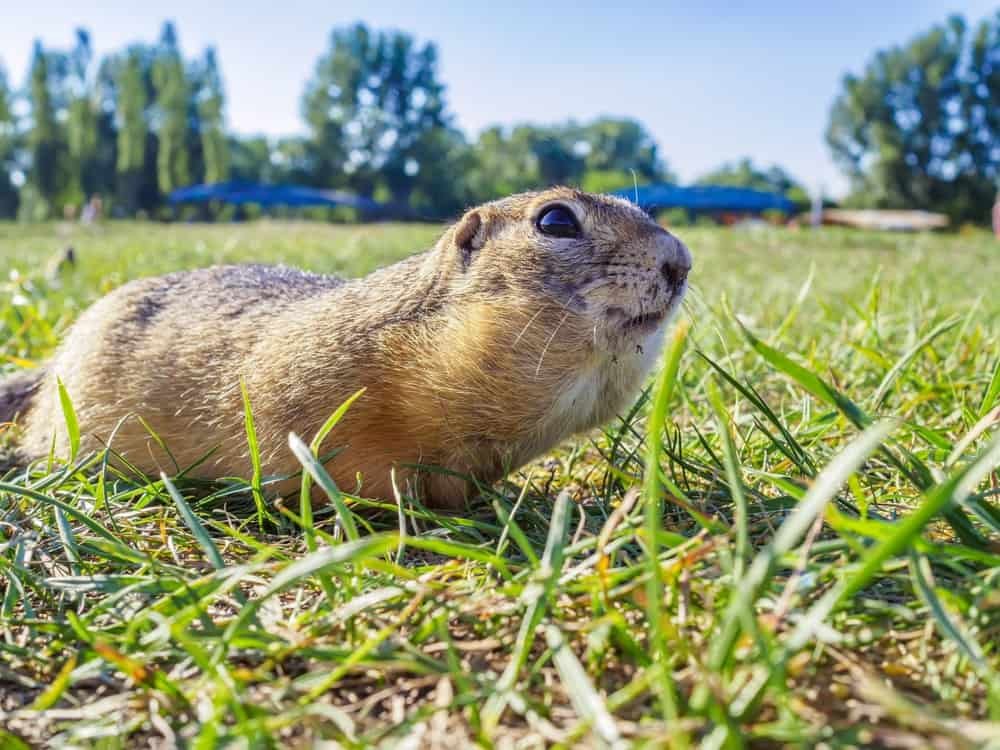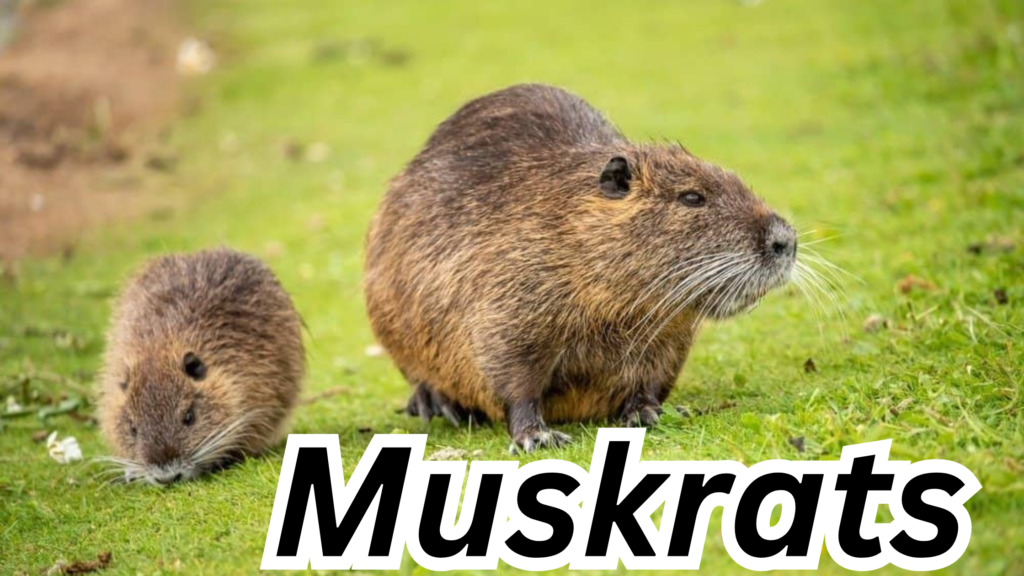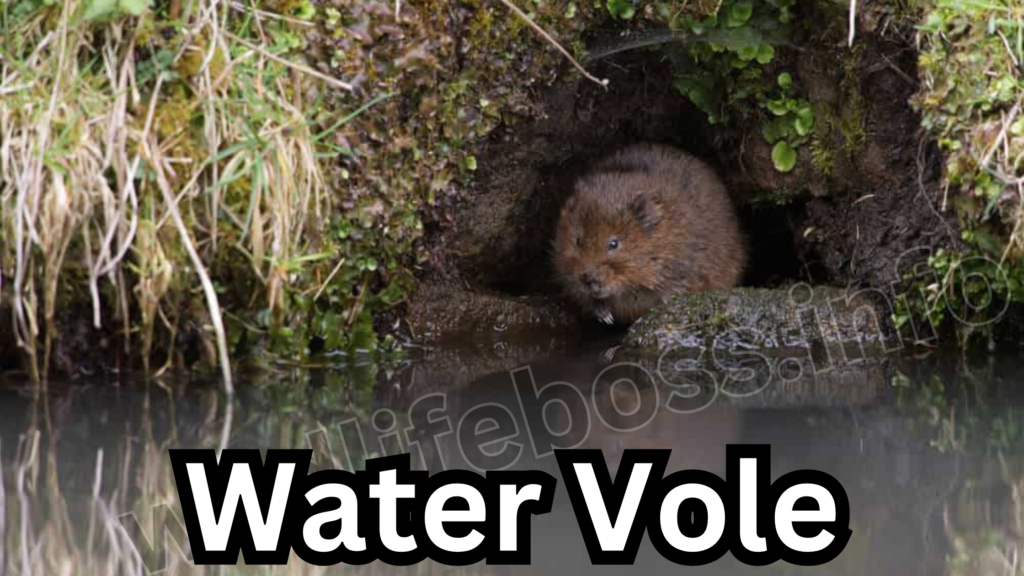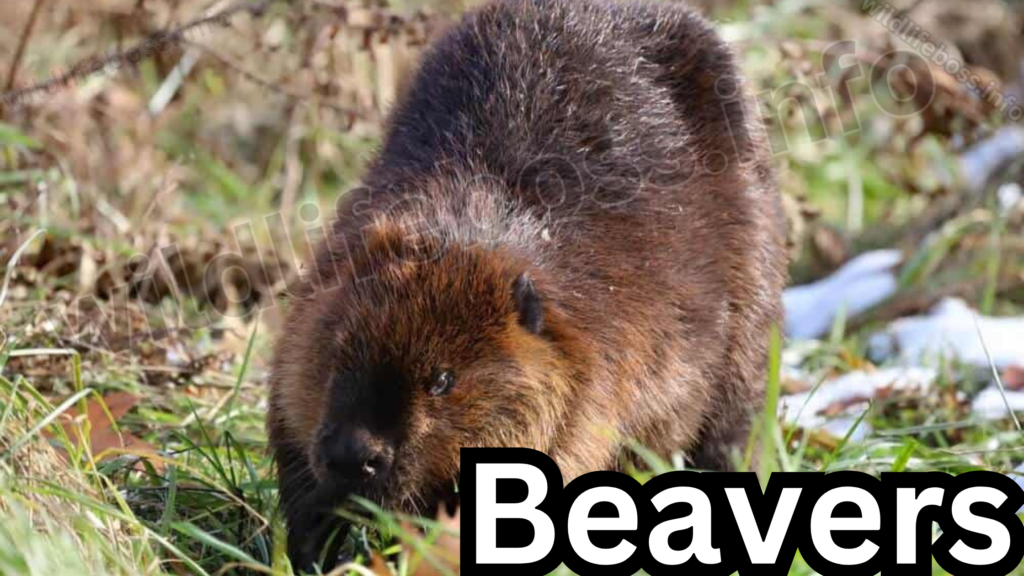Beavers are related to rats, gophers, squirrels, and other animals since they belong to the Rodentia taxonomic order.
Their teeth are the distinguishing characteristic of the Rodentia order. Beavers and all other rodent species have one pair of upper and lower incisors, or long front teeth.
They need to be gnawed by rodents to maintain their proper length because they develop continually. Because their teeth are protected by a thick coating of enamel, beavers have bright orange teeth.
Beavers are further distinguished by the appearance of their tails, which resemble flat paddles. They are long, roughly 10 inches (25 cm), quite broad, and covered in black scales.
A beaver has hair on the rest of its body, but not on its tail. Beavers have waterproof fur that is shiny and brownish. The protective layer of guard hairs lies beneath the outer coat of fur.
Beavers, like many other rodents, have huge teeth and glands. These characteristics are common to animals including groundhogs, rodents, and gophers. Like muskrats, nutrias, and capybaras, beavers also have thick brown fur. Beavers have physical characteristics with all ten of the animals on this list.
1. Southeastern Pocket Gopher

Quick summary: Beavers and Southeastern pocket gophers share the same brown fur, big teeth, and claws.
The pocket gopher is a member of the Castorimorpha suborder of beavers. This accounts for their resemblance in appearance and makes them close cousins.
Beavers long incisors are also seen in pocket gophers. They burrow and utilize them to bite through roots. Each day, the upper and lower teeth of this pair grow by 0.35 and 0.67 mm, respectively.
Pocket gophers in the Southeast share a similar body form, despite their diminutive size. Both of them are robust creatures with brownish fur. They also possess huge, whiskery noses and long claws.
Sea also: 17 Best Examples Of Animals Like Gophers
2. Capybara

Scientific name: Hydrochoerus hydrochaeris
Quick summary: Like beavers, capybaras swim with their eyes and ears on top of their heads.
The capybara is similar to a large, flat-tailed beaver. They share a number of physical characteristics with beavers, although they are members of a different suborder of rodentia.
Capybaras, like all other rodents, including beavers, have big incisors in the front of their jaws. Like beavers, their bodies are strong and have a humped rear end.
Capybaras are semiaquatic animals with eyes that resemble beavers and are located close to the top of the head. They resemble beavers in both head form and brownish hue.
When a capybara and a beavers are in the water, it might be challenging to distinguish between them.
3. Groundhogs

Scientific name: Marmota monax
Quick summary: Groundhogs have broad, beavers-like tails that are hairy rather than scaly.
A few species on this list have tails as wide as a beavers, including groundhogs. Instead of having broad, flat tails like beavers, many rodents have narrow, tapering tails.
Woodchucks, sometimes known as groundhogs, have more bushier tails that account for 25% of their whole body length. Despite the fact that a beavers tail is hairless, a groundhog’s wide tail can be confusing at first glance.
The color and form of a normal groundhog are also to blame for this. The broad, robust bodies of groundhogs and their thick brown fur are similar to those of beavers.
Their claws are similar, and they dig burrows and holes.
4. Conover’s Tuco-tuco

Scientific name: Ctenomys conoveri
Quick summary: The vivid orange enamel on the teeth of this tuco-tuco species is identical to that of beavers.
At around two pounds, Conover’s tuco-tucos are smaller than the typical beavers. They share the same brown fur and proportionately huge teeth as beavers, though.
The thick covering of bright orange enamel on their teeth is identical to that of beavers teeth. Finally, their feet have the same long, sharp claws at the end, and their whiskers resemble those of a beaver.
5. Stump-tailed Porcupine

Scientific name: Coendou rufescens
Quick summary: Because their spines are darker than those of other species, this porcupine has a more beavers-like appearance.
Despite having short tails, stump-tailed porcupines resemble tiny beavers. A beaver’s fur seems lustrous when submerged in water, but when it dries, tiny spikes appear.
Particularly on the back, these spikes of hair can resemble a porcupine’s quills. Because of their reddish-brown fur, stump-tailed porcupines appear to have darker quills.
These porcupines also have a hunch of the back when they walk. Like a beavers, this makes their rear end look higher than their front end when they walk.
6. Bristle-spined Rat

Scientific name: Chaetomys subspinosus
Quick summary: These rats have brown bristles that resemble beaver fur.
The bristle-spined rat, which resembles a beaver more than a rat, is actually a kind of porcupine.
Beavers do possess huge incisors, however when they are not biting, they are frequently concealed in their mouth. The big incisors of bristle-spined rats are also less noticeable than those of other rodents.
The noses of these porcupines and beavers are quite similar. They stand out more since they are spherical and have a different color from the rest of their face. Additionally, beavers have big, round, black snouts rather than brown ones.
The brown fur and scaly tails of bristle-spined rats are identical. But they are often paler than beavers, and their scaly tails are narrow rather than broad.
7. Nutria

Scientific name: Myocastor coypus
Quick summary: Like their beaver cousins, nutrias have brilliant orange fangs and waterproof fur.
A member of the Myocastoridae family, nutrias are often referred to as coypus. Despite belonging to a distinct suborder, this family shares a lot of similarities with beavers.
Nutas share fur layers with beavers since they are semiaquatic creatures.
Usually, the top layer has the same reddish-brown color as beaver fur. To keep them safe in the water, they also contain a coating of coarse guard hairs.
Nutrias have webbed feet and claws, and their teeth are brilliant orange like a beaver’s. They also share a similar face form, with long whiskers and snub noses.
8. Muskrats

Scientific name: Ondatra zibethicus
Quick summary: Muskrats’ webbed toes and thick brown fur give them the appearance of tiny beavers.
Muskrats may resemble real rats more than beavers, yet they have a far more beaver-like appearance. They are rodents of moderate size, with a maximum weight of four pounds.
Although they are smaller than beavers, their heads are about the same size as their bodies.
Muskrats, like beavers, are insulated in the water by their thick fur coats. Their lustrous, dark brown fur is likewise akin to that of beavers.
In order to aid in swimming, muskrats, like beavers, have webbed feet.
9. Northern Water Vole

Scientific name: Arvicola amphibious
Quick summary: Despite being smaller than beavers, water voles share their round bodies and flat ears.
At first glance, water voles can be mistaken for little beavers. Their bodies resemble beavers in that they are round and robust.
They have small, round ears that are flat on the side of their heads like beavers, and their fur is likewise brownish.
They also live close to bodies of water, frequently sitting directly on the water’s edge. Beavers and other water-dwelling animals share a similar rounded snout shape.
10. Hoary Marmot

Scientific name: Marmota caligata
Quick summary: The size of hoary marmots is comparable to that of little beavers, and they have similar snout and teeth.
The largest American marmot, the hoary marmot, is about the size of a beaver. Approximately the size of a tiny beavers, a huge marmot can weigh up to thirty pounds.
These marmots also have big incisors and round, blunt noses like beavers. The coat fluctuates with the seasons, although in the winter it is a hoary pale tint.
A hoary marmot is much more like a beaver in the summertime in terms of color.
Conclusion:
Beavers are typically easy to identify from other animals because they are among the largest rodents in their family. But they also share a number of characteristics with other rodents, which can make it more difficult to tell them apart.
Beavers can bite through wood more easily thanks to their powerful front teeth. These types of teeth are seen in all rodent species.
Beavers have a common trait with their animal cousins: thick brown fur. Some rodents, like muskrats and nutrias, have webbed feet like beavers so they can swim.


Pingback: 12 Amazing Animals Like Meerkats (With Photos) - Wildlifeboss.info
Pingback: Wolverine Vs Honey Badger: 11 Amazing Differences (Size, Fight Etc.) - Wildlifeboss.info